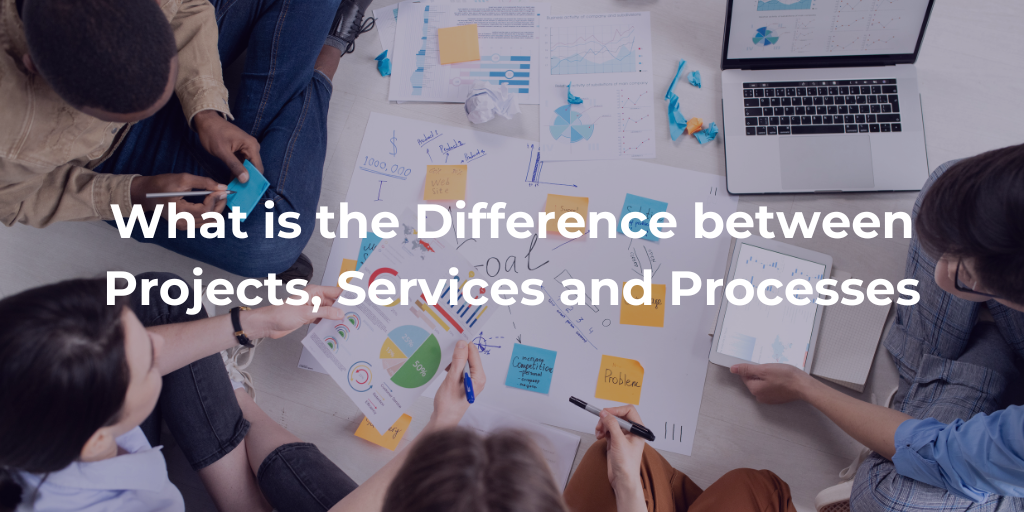In today’s complex and dynamic business landscape, attention is often focused on two key terms: “services” and “projects.” Although these concepts are in frequent use, there is a clear tendency for them to be misunderstood or used interchangeably, which leads to confusion. Let us analyze them in detail to get a more in-depth view:
What is a Project?
When we talk about a project, we refer to a coordinated and planned set of tasks and activities. These are undertaken with the goal of creating a specific product or service, and are managed within a temporary structure, the so-called “Project Team.” Each project is designed with a specific goal in mind: to achieve and meet specific business objectives, translating them into tangible benefits for the organisation.
Services: Definition
Service is articulated as a system of functions and operations, supported by various infrastructures, which could range from technology to human organisation. The essence of a service is to provide added value to the customer, regardless of its nature: it could be an individual, a small business, a large corporation, or even a government institution.
A key aspect of service delivery is the formulation and acceptance of a service level agreement, better known as an SLA, which serves as a covenant between the provider and the customer, guaranteeing quality and performance standards.
Putting the concepts together, an interesting picture emerges: a service comes into full operation just as a project reaches its conclusion. This dynamic highlights how it is possible for a company to simultaneously offer projects and services to its customers. But to do so successfully, it is essential to have the ability to differentiate between project management methodology, for example through PRINCE2, and service management methodology, as outlined by ITIL.
Where to Focus your Resources?
A fundamental question that every company must ask itself is: on which aspect should we focus most of our resources and investments? The direction we should take depends largely on business strategy. If the essence of our business revolves around the creation and delivery of products that later evolve into services, then the emphasis should be on optimizing project management. If, on the other hand, the business is geared toward long-term service delivery, it becomes imperative to excel in service management, where ITIL emerges as the benchmark of excellence.
The link between Projects and Services
But among projects and services, there is one essential element: Processes. Processes form the connective tissue that links and integrates projects and services into an operational continuum. A process can be defined as a series of well-organized and monitored activities aimed at achieving precise and measurable results. Whether it is the planning and implementation phase of a project or the ongoing delivery of a service, processes are the methodological guides that ensure the efficiency and effectiveness of operations.
Conclusion
PRINCE2 and ITIL emerge as the primary guides. While PRINCE2 provides a roadmap of 7 key processes for end-to-end project management, ITIL, on the other hand, lists as many as 26 Processes that cover the entire lifespan of a service.
In any operational phase, whether managing the complexities of a project or ensuring the continuity of a service, processes arise as essential tools. The real challenge is in the art of balancing and integrating these methodologies. And while roles may vary-from project manager to service manager-the main goal remains the same: to deliver invaluable value to clients and stakeholders.
Ready to start your new PRINCE2 project? Read our blog on “How to write a PID (Project Initiation Documentation)” and learn how to efficiently start a new project. If you are more interested in ITIL projects read our blog on “The 9 Most Common ITIL Implementation Mistakes and How to Avoid Them” to have a head-start on your next ITIL project.
QRP International offers courses to achieve your PRINCE2 and ITIL certification. If you are interested in learning more, contact us!








